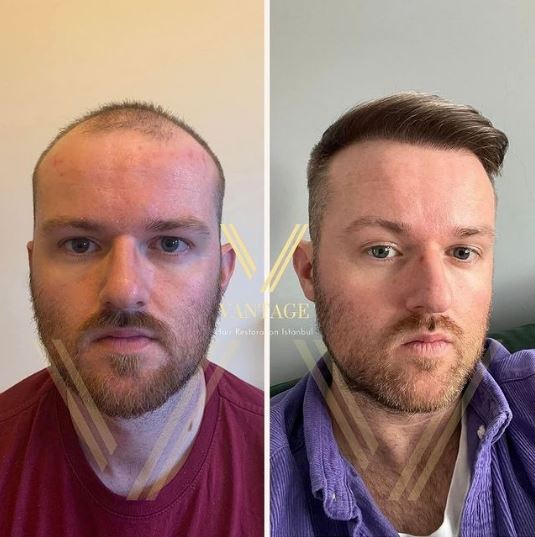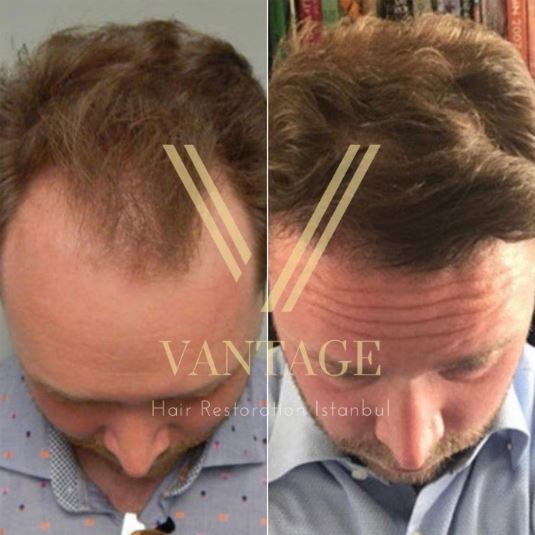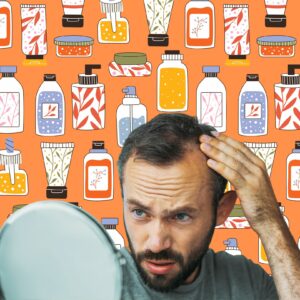
Hair loss is a serious concern for many people, and despite the various approaches to treat it, such as medications, non-surgical treatments, and hair transplants, sometimes hair transplants may not be enough to treat hair loss. In such cases, additional treatments may be necessary to boost hair growth, which is where medications like Finasteride and Minoxidil come into play. However, there has been a debate about the effectiveness of these medications and whether they may cause some skin conditions. Below, you can explore the relationship between Minoxidil and hair transplant and how these two treatments can work together to address hair loss.
What is Minoxidil?
Minoxidil, commonly known as Rogaine, is a topical drug approved by the FDA to slow down hair loss in men. It is specifically marketed to treat male pattern baldness. The drug prevents further hair loss and promotes hair regrowth, and it is directly applied to the scalp in the areas where hair loss has occurred.
How does Minoxidil work?
Minoxidil, originally developed as a treatment for high blood pressure, modifies the functionality of potassium channels in both blood vessels and hair follicles. Minoxidil, which acts as a vasodilator, widens the blood vessels in the area where it is applied. This increase in blood flow can help to slow down hair loss. When Minoxidil is applied to a transplanted area, it can prolong the catagen phase. This, in turn, can help to prevent hair loss.
How effective is Minoxidil?
Minoxidil increases blood circulation around the hair follicles, creating a conducive environment for hair growth. Additionally, Minoxidil stimulates the production of a growth factor that helps generate blood vessels around the hair cells, further slowing down hair loss [1]. However, selecting Minoxidil as a sole treatment for hair loss may not be efficient. Therefore, it’s better to seek an expert’s opinion, and if you intend to use it, please use it only under expert supervision.
Do you have to take Minoxidil if you get a transplant?
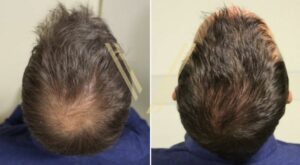
Although Minoxidil can help slow hair loss, it does not offer a complete hair growth treatment. Therefore, whether you use it after a hair transplant may not significantly affect the results. Some studies suggest that Minoxidil may be effective during shock loss, but no solid proof exists [2].
Since a hair transplant is an efficient and permanent way to treat hair loss, you will achieve satisfactory results if you take proper care after the procedure without routing for an additional treatment. Remember, it may take some time to see the final growth of the procedure, but it’s worth the wait.
Should I use Minoxidil on transplanted hair?
Although there’s no harm in using Minoxidil after a hair transplant, it’s essential to be cautious and not rush to apply it. You should wait for at least a month before applying Minoxidil on the transplanted area to prevent damaging the settlement of hair follicles. Therefore, it’s important to keep in mind that you shouldn’t use it without consulting a specialist.
How long does Minoxidil take to work?
When using Minoxidil, it is important to apply it regularly to achieve good results. To get significant results, you should use Minoxidil once a day, and avoid using it more than twice a day. It may take 2-4 months to see the final results after using Minoxidil [3]. Additionally, it is crucial to remember that stopping Minoxidil suddenly may accelerate hair loss, so please use it as prescribed.
Does Minoxidil work for beard?
As a hair loss treatment, Minoxidil is effective in slowing down hair loss and promoting hair growth not only on the scalp but also on the beard. Studies have also suggested that Minoxidil is highly efficient in treating alopecia barbae [4].
How to use Minoxidil for beard?
To apply Minoxidil for beard, you should first ensure that your skin is clean and dry. Start by washing your face with water and then dry it using a towel. Optionally, you can wear gloves to avoid any potential risks. Next, measure the prescribed amount of Minoxidil that you need to apply topically. Apply it to your beard evenly using circular movements. Wait until it is completely dry before touching your face.
Can women use Minoxidil?
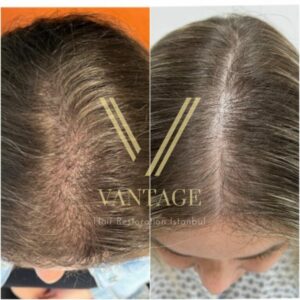
Minoxidil is a safe and highly efficient treatment for androgenetic alopecia in both men and women. Women who are experiencing hair loss can use Minoxidil for women to slow down the process and achieve fascinating results in terms of preventing hair loss [5].
Why cant women use minoxidil?
The main reason why can’t women use Minoxidil is because it relaxes blood vessels and may be excreted in breast milk, so it may not be feasible for breastfeeding women. Additionally, it has serious side effects, making it unsuitable for pregnant women. Even the higher concentrations of Minoxidil, such as minoxidil 5 foam, may not be appropriate for many women. Therefore, it is crucial to consider these factors and consult with a specialist before using Minoxidil.
Does Minoxidil work on hairline?
If you’re experiencing a mild recession on your hairline, Minoxidil could be a helpful solution to promote hair growth in that area. However, if the recession on your hairline is severe, using Minoxidil by itself will not create a miracle. In such cases, it’s essential to consider getting a hair transplant as the first option to treat hair loss permanently.
Can you use Minoxidil on eyebrows?
Although Minoxidil is not specifically designed to slow down hair loss on eyebrows, it may still be helpful for this area. However, it is crucial to use it under the supervision of an expert because improper use can result in unwanted hair growth in unintended areas. Additionally, it is vital to apply it with gloves to avoid this issue. By following these precautions and consulting with a professional, you can use Minoxidil for eyebrow growth.
When To Use Minoxidil (Rogaine)?
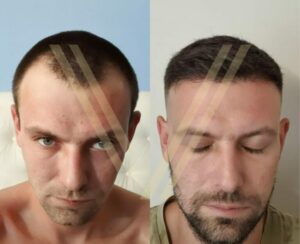
When using Minoxidil (Rogaine) to treat hair loss, consistency is key. To achieve better results, it is recommended to use Minoxidil at the same time every day. Many patients find it convenient to use it in the morning or a few hours before bedtime. However, it is important to note that for Minoxidil to be effective, it should be left to dry for 4-5 hours before applying any other hair care products. Therefore, it is advisable to plan your Minoxidil application around your daily routine and ensure enough time before applying other hair care products.
Minoxidil Before a Hair Transplant
Before getting a hair transplant, to prepare the scalp using Minoxidil is recommended. Using Minoxidil can strengthen the existing hair and improve blood circulation, potentially increasing the success rate of the transplant. By applying Minoxidil in the weeks leading up to the transplant, the condition of the scalp and hair follicles can be optimized, making them more receptive to the transplant procedure. Therefore, it is important to use Minoxidil properly before the procedure and quit using it a while before.
Why stop Minoxidil before hair transplant?
As Minoxidil can potentially widen blood vessels, it’s advisable to quit using it before surgery. This can prevent excessive bleeding and make the procedure less challenging. Additionally, using Minoxidil can lead to the development of larger hair follicles, which can impact the hair transplant procedure. Therefore, stopping Minoxidil before hair transplant allows you to achieve a better outcome.
How long should Minoxidil stop before hair transplant?
To optimize blood flow and promote hair follicle growth, it’s recommended to stop using topical Minoxidil three weeks before the hair transplant procedure. If necessary you can use Minoxidil after the procedure with a prescription by a surgeon.
Minoxidil After a Hair Transplant
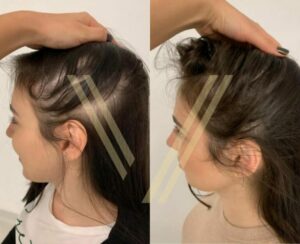
Although it may not be necessary to use Minoxidil before and after hair transplant, you may use it to enhance hair growth and minimize downtime after the procedure. Using it with a prescription and monitoring by a qualified expert is essential.
When can I start using Minoxidil after hair transplant?
After undergoing a hair transplant, it is possible to expedite the healing process and achieve natural-looking results using Minoxidil. However, waiting for the hair follicles to settle before using Minoxidil is crucial. Before starting Minoxidil, it is recommended that you wait for at least 6- 10 weeks after the procedure to ensure that the initial growth has begun. Feel free to contact our medical consultants before using Minoxidil after hair transplant.
Can Minoxidil speed increase your hair transplant results?
Minoxidil can speed up hair transplant results. By shortening the telogen phase, Minoxidil encourages the hair follicles to produce new hair sooner than they would naturally. By extending the anagen phase, the product allows hair to stay in the growth phase for a longer period, leading to longer and thicker hair.
Can minoxidil thicken transplanted hair?
Minoxidil works by widening blood vessels and enhancing blood flow, which in turn promotes hair thickening by nourishing hair follicles and reducing downtime. However, it’s important to note that Minoxidil may not be able to achieve significant hair growth on its own. Therefore, adopting a healthy hair care routine is essential to complement its effects.
When to stop Minoxidil after a hair transplant?
After a hair transplant, you may use Minoxidil for as long as you wish, but it’s usually recommended to apply it for up to 12 months. It’s not mandatory to use Minoxidil after a hair transplant, but if you decide to use it, it would be advisable to seek advice from a specialist to ensure proper usage.
Do I have to use Minoxidil forever?
Whether or not to use Minoxidil after your hair transplant is a decision that should be made in consultation with your surgeon. If you had a hair transplant to stop using minoxidil, then you might not want to use Rogaine after the surgery.
However, it is important to know that using Rogaine can greatly benefit your hair growth journey and enhance the overall appearance of your hair. Therefore, it is crucial to discuss the use of Rogaine with your surgeon before the surgery.
How to apply Minoxidil?

Minoxidil is available in three different forms: topical, foam, and oral. Each form of Minoxidil may come in different concentrations, and it is important to have an expert prescribe the proper dose to treat hair loss. The most common version of Minoxidil is the topical form, which comes as a solution. To use it, apply it to a dry scalp and wait for it to dry before applying any other product.
The foam version of Minoxidil is also popular. To use it, shake the canister well before use, dispense the recommended amount onto your fingers, and apply the foam to the affected areas of the scalp, massaging it in gently.
Lastly, the oral form of Minoxidil, also known as Minoxidil pills, is usually taken with water and is prescribed to take once a day.
How often should I use Minoxidil?
The frequency of use for Minoxidil varies depending on your prescription. Generally, it is not recommended to use it more than twice a day. If you wish to stop using Minoxidil, it is important to consult your specialist and gradually lower the dosage as advised. Please do not stop or alter the medication without proper medical guidance.
Can I comb my hair after applying Minoxidil?
Yes, you can comb your hair after applying Minoxidil. In fact, it may enhance the efficiency of the medication since combing enhances blood flow. However, you should take into account that you shouldn’t comb your hair before it completely dries after applying it.
Can you put Minoxidil on wet hair?
For best results, it is recommended to apply Minoxidil on dry hair. This is because wet hair can dilute the solution and reduce its effectiveness. To ensure the efficient application of Minoxidil, it is advised that you pat dry your head with a towel before applying the solution.
How long to leave Minoxidil on the scalp before washing?
When using liquid minoxidil, it is generally recommended that you leave it on your scalp for at least 4 hours before washing your hair. This will give enough time for the medication to be absorbed into your skin.
On the other hand, when using minoxidil foam, it is important to note that it can dry faster than the liquid formulation. Therefore, it is usually advised that you wait for about 2 to 4 hours before washing your hair after applying minoxidil foam. It’s always best to refer to the specific instructions provided by the product packaging and your specialist to ensure that you are using the product correctly and effectively.
Can I go out in the sun after applying minoxidil?
After you apply Minoxidil, it is crucial that you wait for it to dry completely. Once it has dried, you can go out in the sun. However, it is important to be careful since your scalp may be sensitive after applying Minoxidil. Therefore, waiting for it to dry before going out and wearing sunscreen to protect your scalp from the sun’s harmful rays is beneficial.
How to get oral Minoxidil?

Although Minoxidil in oral form is primarily used to improve blood pressure, it can also be used for treating hair loss. However, before taking oral Minoxidil, it’s essential to consult with a specialist who can determine whether it’s suitable for you as it may not be suitable for everyone and has potential side effects.
Is oral minoxidil better than topical?
Although there aren’t any significant differences between the results obtained with both forms of Minoxidil, the topical form is the most preferred one as it shows its effects much faster than the oral version [6].
How long does oral minoxidil last?
Once administered orally, Minoxidil is quickly absorbed into the bloodstream and can maintain its effects for several hours. However, the drug is usually administered in divided doses throughout the day to maintain its therapeutic effects. It takes consistent use of at least 3-6 months to observe visible results from oral Minoxidil, which is essential to do under the supervision of a medical professional.
Is minoxidil safe?
Topical minoxidil has been regarded as a safe medication to apply to slow down hair loss. However, as with any medication, there are several side effects related to Minoxidil and its use as well. It’s essential to consult a healthcare provider and check Minoxidil’s side effects if you observe complications after the procedure.
Is minoxidil safe for women?
Minoxidil is a safe medication for women, as it has been proven. It is also an effective treatment for female pattern baldness. Additionally, it is the only medication approved by the FDA for women to use to treat hair loss, as Finasteride can cause severe side effects. Furthermore, it is worth noting that more diluted versions of topical minoxidil work better for women [7].
Does minoxidil make hair grow faster?
Minoxidil has the ability to enhance blood flow, hence it creates an environment that promotes faster hair growth. Furthermore, it has been observed to increase the anagen phase, the active growth phase of hair follicles, resulting in a delay in hair loss. However, it’s important to note that if you discontinue Minoxidil, you might experience rapid hair loss. Therefore, it’s advisable to use it under the supervision of a specialist.
Does oral minoxidil cause weight gain?
While oral Minoxidil is an effective medication to treat hair loss, it has potential side effects. Palpitations, weight gain, headaches, and shortness of breath are some of the common side effects that have been reported. Since it enhances blood flow, it may cause fluid retention, which could ultimately result in weight gain. Therefore, it’s crucial to adopt a healthy lifestyle to prevent edema swelling, and weight gain caused by these factors.
FAQs
Although Minoxidil may cause hair loss, the shedding of old hair is actually a positive sign. This happens because shedding allows hair follicles to grow new hair to replace what has been lost. Furthermore, Minoxidil can prolong the growth phase of hair follicles, promoting more hair growth than usual. It is also important to note that experiencing hair loss after using Minoxidil is quite rare.
Minoxidil is a cosmetic drug that is believed to promote cell growth. However, there are concerns that this could potentially increase the risk of DNA damage and consequently lead to cancer. While there is no conclusive evidence that Minoxidil causes cancer, it is important to be aware of other possible complications that may arise from its use.
As Minoxidil functions as a vasodilator, it can promote hair growth and treat hypertension, high blood pressure, and fluid retention by enhancing blood vessels. However, this may also lead to headaches. Additionally, using Minoxidil can raise intracranial pressure, which can also cause headaches. Therefore, it is crucial to note that headaches may have other underlying causes besides Minoxidil.
By enhancing blood flow and nurturing hair follicles, Minoxidil can thicken hair. However, it’s important to note that Minoxidil rarely may change the texture or structure of hair strands. Instead, it achieves a denser and thicker appearance by supporting hair growth.
Although rare, Minoxidil has the potential to alter the texture and color of hair strands to become darker and coarser.
Although erectile dysfunction may be a rare side effect of Minoxidil, it is more likely to occur with oral application than with topical application.
In order to achieve notable results with Minoxidil, it is important to use it consistently. If you discontinue using Minoxidil abruptly, you may experience hair loss again as Minoxidil cannot offer complete hair restoration on its own. Therefore, it is crucial to gradually reduce the use of Minoxidil to prevent sudden hair loss.
Typically, minoxidil is not recommended for use on the donor area as it may interfere with the healing process. The donor area is where hair follicles are harvested for transplantation. It is crucial to follow the post-transplant care instructions provided by your surgeon to ensure proper healing and minimize the risk of complications.
As itching and dandruff may be observed after using the medication, you can use ketoconazole shampoo after Minoxidil. To get the best results using ketoconazole shampoo after Minoxidil, wait for it to completely dry before you apply the shampoo. After applying the shampoo, let it sit for 5 minutes and rinse with warm water.
Hair growth after a hair transplant varies from person to person. Generally, transplanted hairs start to shed within a few weeks after the procedure, which is known as shock loss. However, this is a normal part of the hair transplant process, and new hair growth usually begins within 3 to 4 months. Full results may take up to a year or more, depending on individual factors such as the rate of hair growth and the specific characteristics of your hair.
As a vasodilator, Minoxidil works by expanding blood vessels and improving blood circulation around hair follicles. By doing so, it stimulates hair growth by providing more oxygen and nutrients to the hair roots. However, one of the side effects of using Minoxidil is initial shedding, which is a natural part of the process.
References:
- Suchonwanit P, Thammarucha S, Leerunyakul K. Minoxidil and its use in hair disorders: a review. Drug Des Devel Ther. 2019;13:2777-2786. https://pubmed.ncbi.nlm.nih.gov/31496654/
- True RH, Dorin RJ. A protocol to prevent shock loss. Hair Transplant Forum Int. 2005; 15: 197. https://www.ishrs-htforum.org/content/htfi/15/6/197.full.pdf
- Sever MS, Sonmez YE, Kocak N. Limited use of minoxidil in renal transplant recipients because of the additive side-effects of cyclosporine on hypertrichosis. Transplantation. 1990 Sep;50(3):536 https://pubmed.ncbi.nlm.nih.gov/2402807/
- https://www.ncbi.nlm.nih.gov/pmc/articles/PMC8511680/
- Olsen EA, Dunlap FE, Funicella T, et al. A randomized clinical trial of 5% topical minoxidil versus 2% topical minoxidil and placebo in the treatment of androgenetic alopecia in men. J Am Acad Dermatol. 2002;47(3):377-385. https://pubmed.ncbi.nlm.nih.gov/28078868/
- Faghihi G, Iraji F, Siadat AH, Saber M, Jelvan M, Hoseyni MS. Comparison between “5% minoxidil plus 2% flutamide” solution vs.“5% minoxidil” solution in the treatment of androgenetic alopecia. J Cosmet Dermatol. 2022;21(10):4447-4453. https://pubmed.ncbi.nlm.nih.gov/38031516/#:~:text=Conclusion%3A%20Although%20topical%20minoxidil%20has,and%20male%20pattern%20hair%20loss.
- Vexiau P, Chaspoux C, Boudou P, et al. Effects of minoxidil 2% vs. cyproterone acetate treatment on female androgenetic alopecia: a controlled, 12-month randomized trial. Br J Dermatol. 2002;146:992–9. https://pubmed.ncbi.nlm.nih.gov/12072067/



